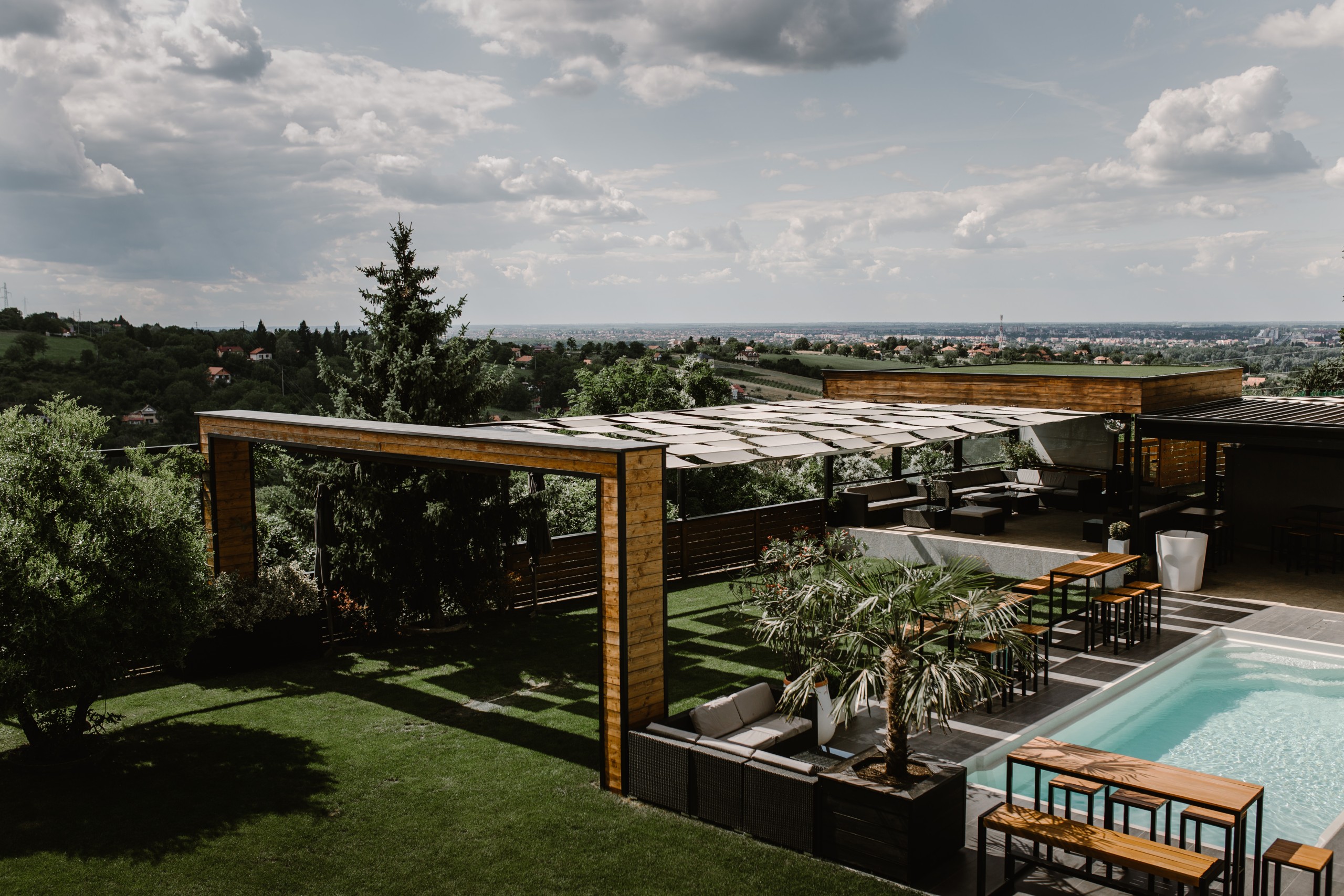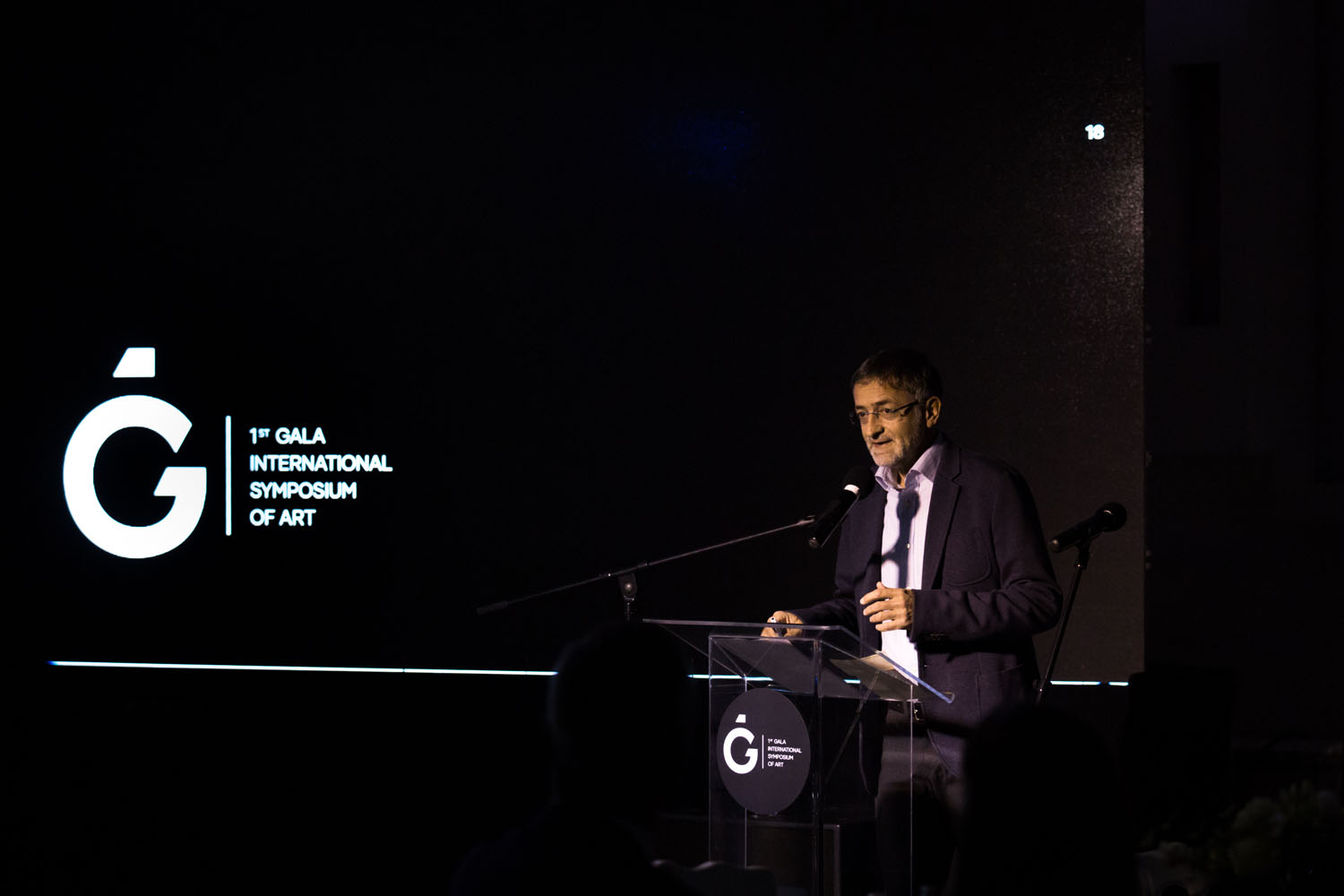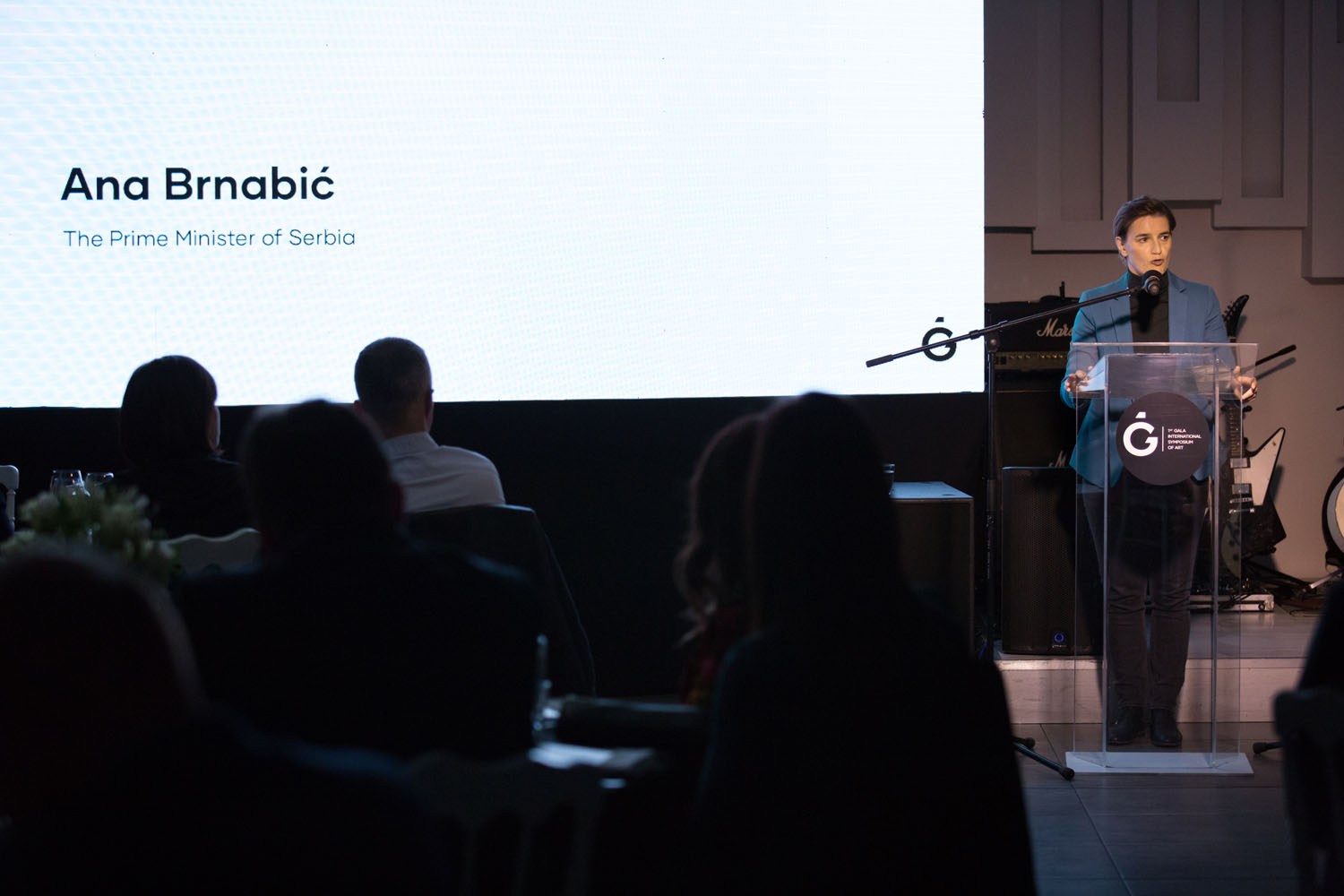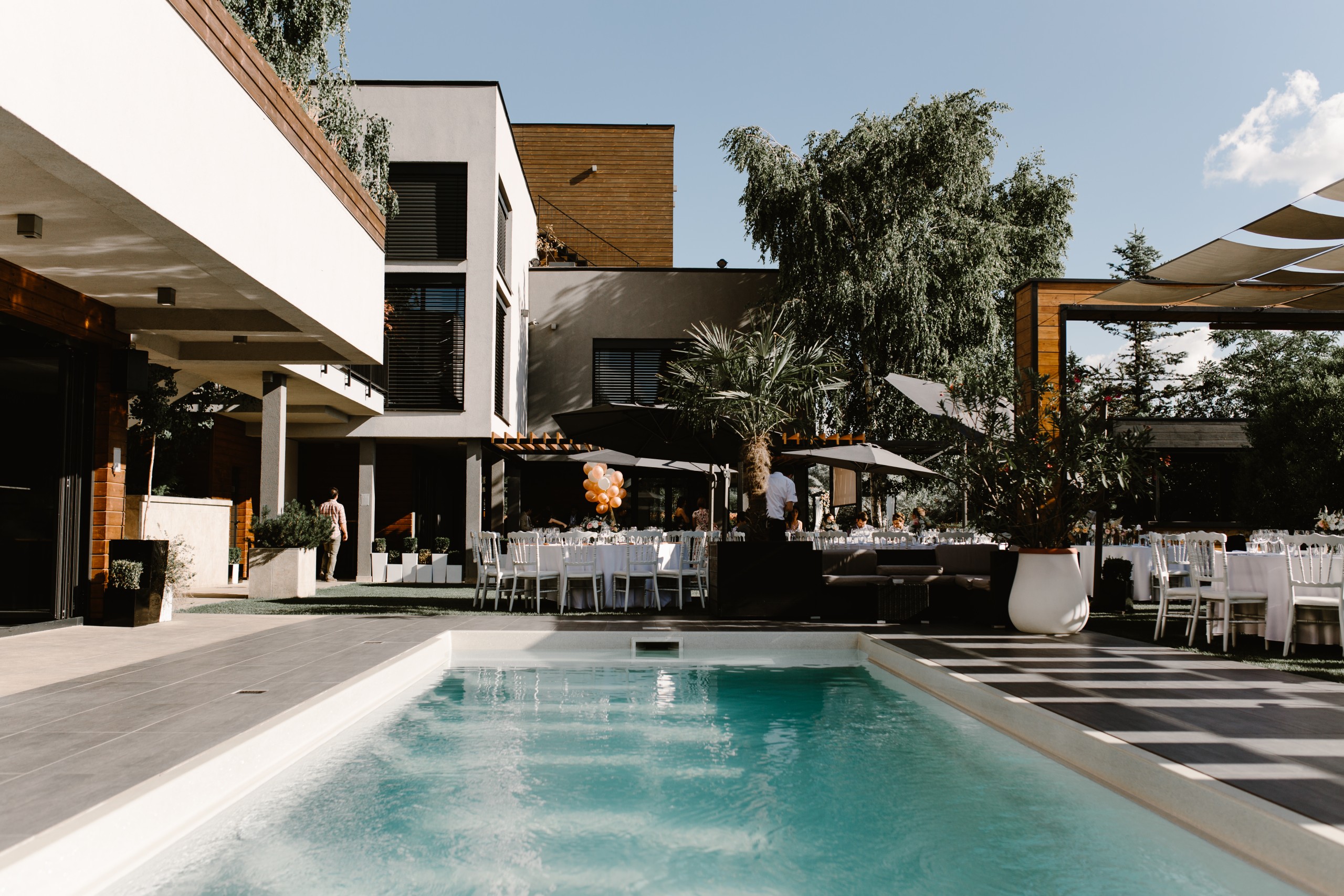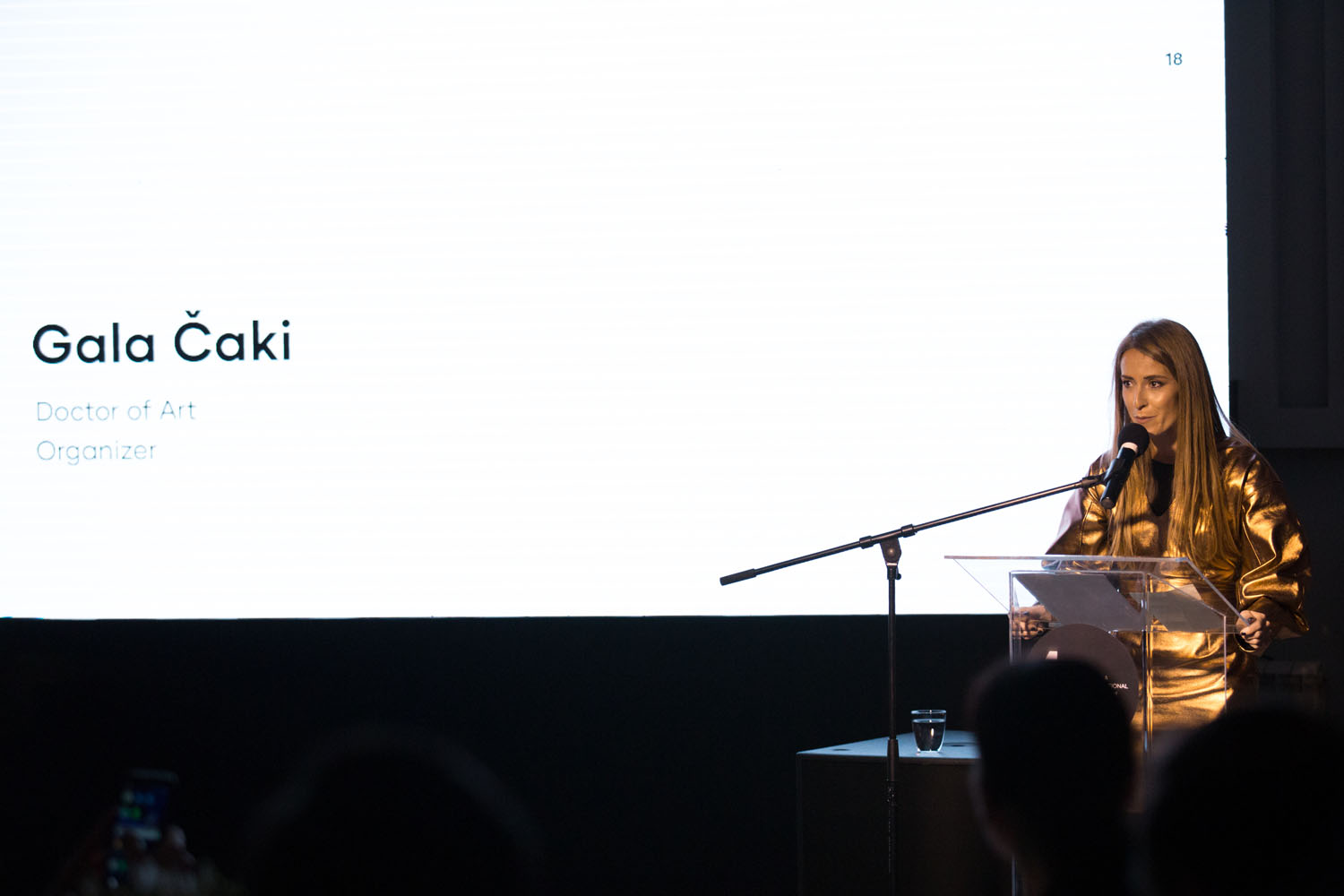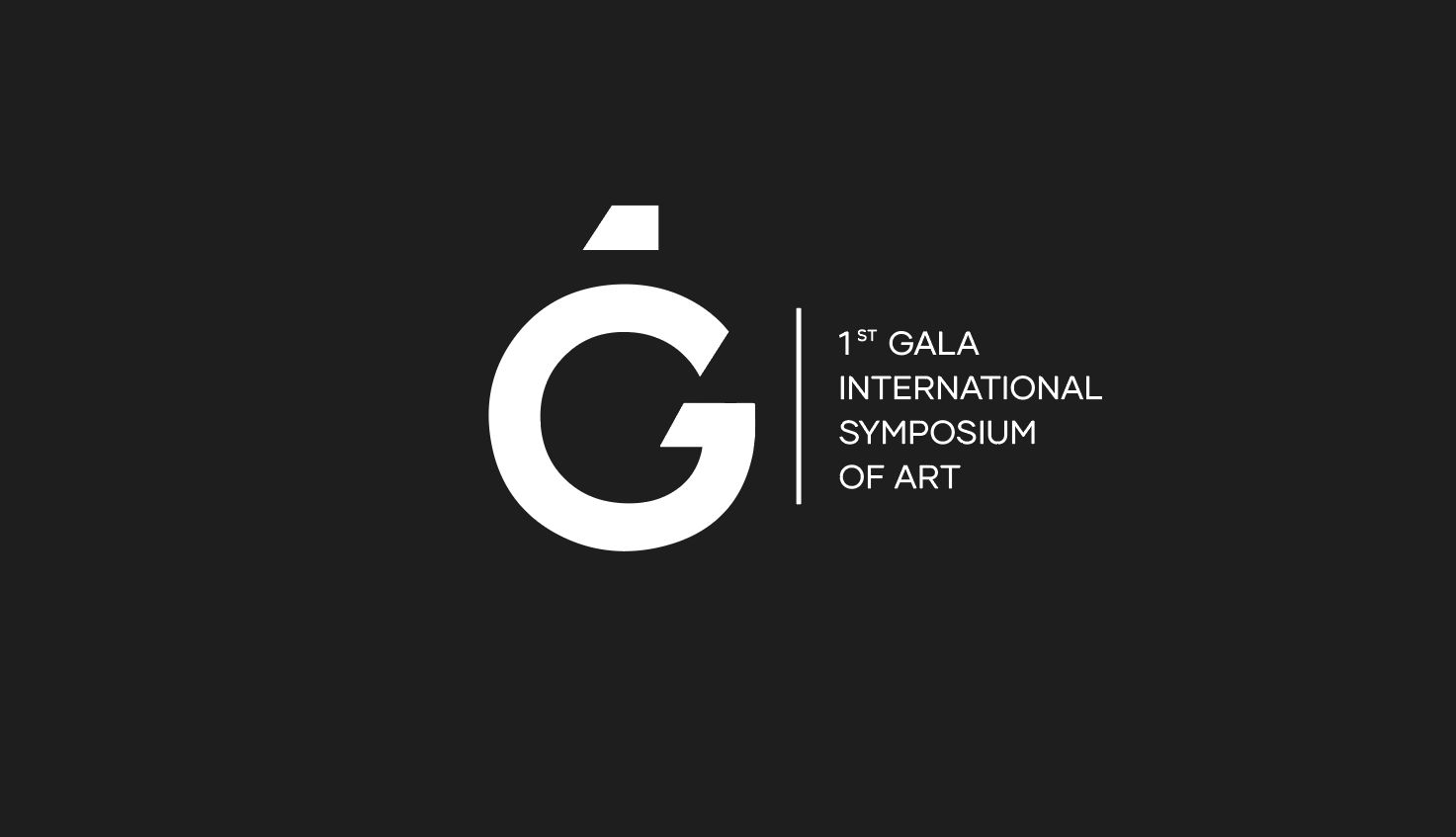
The Gala Symposium – The Parallel World of Gala Csaki: An intensive conference
In order to grasp the meaning, define the significance and recognize the qualities of the international conference of contemporary art founded under the title Gala Symposium, which includes artists from all over the world, what we need, first and foremost, is to take a look into the current situation on the cultural scene which will automatically reveal substantiated reasons for establishing a symposium of this kind.
I will first draw attention to the fact that out of over 300 art colonies (workshops, summits, symposia, congresses) organized in Serbia, only few have the status of truly professional and internationally referential symposia. This fact, illustrating the quantity over quality, justifies the need for a new professional congress as a platform for addressing current issues and establishing new constellations. If we take into consideration the fact that, besides professional focus, this symposium is probably the first to target organization, promotion, and business aspects of contemporary art production, coupled with a clear ambition to internationalize our scene, it becomes clear that it introduces a new model of presenting contemporary art.
Secondly, I must mention the social context, which is necessary for understanding both the current situation and the need for its overcoming through such a project. Due to the fact that our young society is still undergoing the transition process, while, at the same time, it is sharing the burden of the global paradigm shift – both in economy and culture – it is faced with a dilemma of choosing its cultural strategy, which hangs over our heads like the Sword of Damocles: to dig up the tradition from the past so that the present could be built upon the foundations of a more or less deep history as some kind of a bridge between two worlds – two times; to construct contemporariness as an echo of the most valuable national relics and establish a continuity with historic events as well as the poetics as a fundamental precondition of a stable culture; or, quite to the contrary, in the time of local globality/global locality, to follow the spirit of contemporariness and current practices of cultural production as an imperative that will by sheer logic of contemporariness, at an appropriate time and catering to project-specific needs, establish links with history and tradition, both nationally and internationally. Societies with long-lasting and continuous cultural history are presented with such dilemmas to a much lesser extent, as their histories and traditions are mostly already elaborated, so new and revolutionary readings of them are not needed, which leaves contemporariness with plenty of space and enough time to manifest its distinctive features. In other words, this allows those participating in the scene to interpret contemporariness innovatively and creatively.
However, a young society, such as Serbian, whose tradition is fragmented and whose context is often obscured, and which lacks capacities – economically, and professionally for that matter (due to negative selection originating in the communist era and progressing today) – to provide a reading and revitalise the major developmental points, is additionally handicapped by a lack of the mainstream, which not only has an adverse influence on the decisions on the strategic courses of development, but on both the alternative discourse and the very meaning and existence of the alternative stream* (alternative = mainly production of the young).
The almost complete lack of the mainstream, besides the confusion about the relationship between tradition and contemporariness, defocuses and blurs the view of the art scene, which, thus, loses its power to represent qualitatively. This is no blurriness caused by cultural opacity, which is present yet not impenetrable, but a blurriness caused by an inadequate institutional policy and media perplexity about it, as well as the lack of answers to the question of what is supposed to be the cultural mainstream. This turbulent confusion, additionally encouraged by transitional precariousness, results in a lack of rules and value criteria in the very place they are supposed to be – in the heart of creating important decisions.
In such a situation, the initiative seems absolutely justified to make an attempt at tackling the aggregated problems and needs of artists and the art scene from a different perspective, in the fashion of the Gordian Knot solution.
Gala Čaki, as the founder of this international symposium of an academic, intensive character, envisaged it, for the reasons mentioned, as a new, contemporary, institutional platform that is dynamic, free from local dilemmas and bureaucratic limitations, and oriented towards activating knowledge and promoting quality in the context of international value criteria. Whereas, it is absolutely clear that both knowledge and quality, even the highest one, can hardly be seen, let alone function, outside a system. And consequently, the more efficient the system is, the better results it yields.
With her intention to gather 12 artists from different parts of the world who bring artistic quality, international recognisability and rating, as well as organisational and communication skills, Gala Čaki has set the main premise of the symposium – the productive and creative components. Opting for the spirit of contemporariness that will automatically establish links in accordance with the needs of the project, the organiser has created a new, functional system that guarantees the success of the event to a large extent. This system, as any other developed art system, presupposes participation of different social, economic and political factors, which contribute to identifying actual needs of the art scene and artists.
Therefore, the innovativeness of this symposium lies not only in the fact that it has received official institutional support on the one hand, and active involvement of the political and economic factors on the other, including both the real art market and collectors who have been left outside professional events so far. The innovativeness and fundamental value of this symposium lies in its intention to create a new, dynamic, and efficient international constellation which, besides a number of other qualities, includes an elaborate model of the art system adapted to the contemporary moment. This means: a complete independence and full artistic freedom, international context and network on the one hand, and respect of social and economic rules on the other.
Concretely, the structure of the Gala Symposium contains all these preconditions since it includes:
- A six-day work conference,
- An official Symposium opening in situ with presence of the political factor,
- Exhibition and promotion of works in the Cultural station “Svilara” with a vernissage and catalogue promotion,
- Arranging international exchange of artists and exhibitions,
- Communication, business/promotional meetings with ambassadors, collectors and economic factors.
My previous comments lead to the conclusion that the following distinction is typical of this young, discontinued society – the appearance and existence of parallel worlds that are inhabited by completely different scenes and mechanisms of operation and communication. These worlds, among which we have been discussing the world of Gala Čaki, these scenes have almost no points of contact and interaction. And they will not have them for a long time unless history repeats itself with a surge of smart, talented and educated generation of young people who took things into their hands, connected the parallel worlds and constituted a scene that boomed into existence. That is how Rock & Roll was born.
I have every confidence in the parallel world of the GALA SYMPOSIUM, whose structure promises a capacity to create a long-lived scene, due to its international context and the capacity to connect the artistic, political, and economic factors on the one hand, and its punning name containing an in-joke, which speaks of the witticism and self-awareness of the new generation.
*The relationship between the alternative and mainstream is causal. There is no quality alternative stream without a strong mainstream, and without a strong mainstream, as a basic social matrix attacked and challenged, corrected or negated by the alternative one, the alternative art is disoriented. Decentralisation of the cultural and art scene does not automatically imply that the mainstream has disappeared. Quite on the contrary, it only means that the process of institutionalisation of the mainstream is faster and that the alternative discourses have multiplied and become somewhat independent, while the filtration process has become more complicated. The tension between the mainstream and alternative streams, necessary and always present, remains a positive factor of the scene.
The Gala Symposium – The Parallel World of Gala Csaki: An intensive conference
In order to grasp the meaning, define the significance and recognize the qualities of the international conference of contemporary art founded under the title Gala Symposium, which includes artists from all over the world, what we need, first and foremost, is to take a look into the current situation on the cultural scene which will automatically reveal substantiated reasons for establishing a symposium of this kind.
I will first draw attention to the fact that out of over 300 art colonies (workshops, summits, symposia, congresses) organized in Serbia, only few have the status of truly professional and internationally referential symposia. This fact, illustrating the quantity over quality, justifies the need for a new professional congress as a platform for addressing current issues and establishing new constellations. If we take into consideration the fact that, besides professional focus, this symposium is probably the first to target organization, promotion, and business aspects of contemporary art production, coupled with a clear ambition to internationalize our scene, it becomes clear that it introduces a new model of presenting contemporary art.
Secondly, I must mention the social context, which is necessary for understanding both the current situation and the need for its overcoming through such a project. Due to the fact that our young society is still undergoing the transition process, while, at the same time, it is sharing the burden of the global paradigm shift – both in economy and culture – it is faced with a dilemma of choosing its cultural strategy, which hangs over our heads like the Sword of Damocles: to dig up the tradition from the past so that the present could be built upon the foundations of a more or less deep history as some kind of a bridge between two worlds – two times; to construct contemporariness as an echo of the most valuable national relics and establish a continuity with historic events as well as the poetics as a fundamental precondition of a stable culture; or, quite to the contrary, in the time of local globality/global locality, to follow the spirit of contemporariness and current practices of cultural production as an imperative that will by sheer logic of contemporariness, at an appropriate time and catering to project-specific needs, establish links with history and tradition, both nationally and internationally. Societies with long-lasting and continuous cultural history are presented with such dilemmas to a much lesser extent, as their histories and traditions are mostly already elaborated, so new and revolutionary readings of them are not needed, which leaves contemporariness with plenty of space and enough time to manifest its distinctive features. In other words, this allows those participating in the scene to interpret contemporariness innovatively and creatively.
However, a young society, such as Serbian, whose tradition is fragmented and whose context is often obscured, and which lacks capacities – economically, and professionally for that matter (due to negative selection originating in the communist era and progressing today) – to provide a reading and revitalise the major developmental points, is additionally handicapped by a lack of the mainstream, which not only has an adverse influence on the decisions on the strategic courses of development, but on both the alternative discourse and the very meaning and existence of the alternative stream* (alternative = mainly production of the young).
The almost complete lack of the mainstream, besides the confusion about the relationship between tradition and contemporariness, defocuses and blurs the view of the art scene, which, thus, loses its power to represent qualitatively. This is no blurriness caused by cultural opacity, which is present yet not impenetrable, but a blurriness caused by an inadequate institutional policy and media perplexity about it, as well as the lack of answers to the question of what is supposed to be the cultural mainstream. This turbulent confusion, additionally encouraged by transitional precariousness, results in a lack of rules and value criteria in the very place they are supposed to be – in the heart of creating important decisions.
In such a situation, the initiative seems absolutely justified to make an attempt at tackling the aggregated problems and needs of artists and the art scene from a different perspective, in the fashion of the Gordian Knot solution.
Gala Čaki, as the founder of this international symposium of an academic, intensive character, envisaged it, for the reasons mentioned, as a new, contemporary, institutional platform that is dynamic, free from local dilemmas and bureaucratic limitations, and oriented towards activating knowledge and promoting quality in the context of international value criteria. Whereas, it is absolutely clear that both knowledge and quality, even the highest one, can hardly be seen, let alone function, outside a system. And consequently, the more efficient the system is, the better results it yields.
With her intention to gather 12 artists from different parts of the world who bring artistic quality, international recognisability and rating, as well as organisational and communication skills, Gala Čaki has set the main premise of the symposium – the productive and creative components. Opting for the spirit of contemporariness that will automatically establish links in accordance with the needs of the project, the organiser has created a new, functional system that guarantees the success of the event to a large extent. This system, as any other developed art system, presupposes participation of different social, economic and political factors, which contribute to identifying actual needs of the art scene and artists.
Therefore, the innovativeness of this symposium lies not only in the fact that it has received official institutional support on the one hand, and active involvement of the political and economic factors on the other, including both the real art market and collectors who have been left outside professional events so far. The innovativeness and fundamental value of this symposium lies in its intention to create a new, dynamic, and efficient international constellation which, besides a number of other qualities, includes an elaborate model of the art system adapted to the contemporary moment. This means: a complete independence and full artistic freedom, international context and network on the one hand, and respect of social and economic rules on the other.
Concretely, the structure of the Gala Symposium contains all these preconditions since it includes:
- A six-day work conference,
- An official Symposium opening in situ with presence of the political factor,
- Exhibition and promotion of works in the Cultural station “Svilara” with a vernissage and catalogue promotion,
- Arranging international exchange of artists and exhibitions,
- Communication, business/promotional meetings with ambassadors, collectors and economic factors.
My previous comments lead to the conclusion that the following distinction is typical of this young, discontinued society – the appearance and existence of parallel worlds that are inhabited by completely different scenes and mechanisms of operation and communication. These worlds, among which we have been discussing the world of Gala Čaki, these scenes have almost no points of contact and interaction. And they will not have them for a long time unless history repeats itself with a surge of smart, talented and educated generation of young people who took things into their hands, connected the parallel worlds and constituted a scene that boomed into existence. That is how Rock & Roll was born.
I have every confidence in the parallel world of the GALA SYMPOSIUM, whose structure promises a capacity to create a long-lived scene, due to its international context and the capacity to connect the artistic, political, and economic factors on the one hand, and its punning name containing an in-joke, which speaks of the witticism and self-awareness of the new generation.
*The relationship between the alternative and mainstream is causal. There is no quality alternative stream without a strong mainstream, and without a strong mainstream, as a basic social matrix attacked and challenged, corrected or negated by the alternative one, the alternative art is disoriented. Decentralisation of the cultural and art scene does not automatically imply that the mainstream has disappeared. Quite on the contrary, it only means that the process of institutionalisation of the mainstream is faster and that the alternative discourses have multiplied and become somewhat independent, while the filtration process has become more complicated. The tension between the mainstream and alternative streams, necessary and always present, remains a positive factor of the scene.


